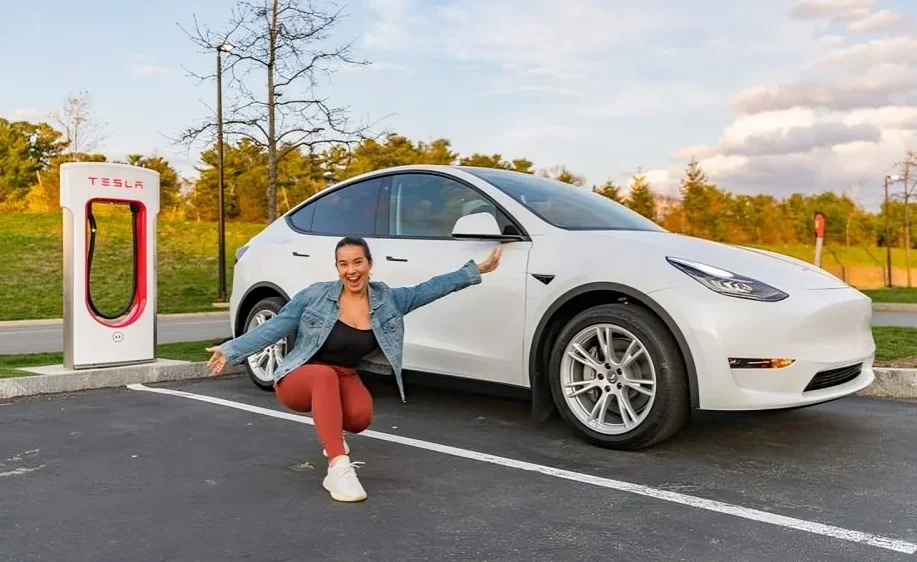The automobile market in the USA stands as one of the largest and most influential in the world. In 2025, it is undergoing a transformation driven by advanced technology, environmental regulations, and shifting consumer demands.
From electric vehicle adoption to new manufacturing trends, the American automotive sector is not only adapting but also shaping global mobility standards. This article explores the current state of the industry, emerging trends, challenges, and what lies ahead for both manufacturers and consumers.
The Current State of the U.S. Automobile Market
Over the past few years, the U.S. automotive market has rebounded from pandemic-related slowdowns, experiencing steady growth in both new and used vehicle sales. While traditional gasoline-powered cars still dominate, electric and hybrid vehicles are capturing a significant market share.
According to recent industry reports, over 17 million vehicles are projected to be sold in the U.S. in 2025. This includes a notable increase in battery electric vehicles (BEVs), which are supported by government incentives and expanding charging infrastructure.
Key Factors Driving Growth in the Automobile Industry in the USA
Several factors are contributing to the continued strength of the U.S. automotive market:
1. Rising Demand for Electric Vehicles (EVs)

Electric vehicles are no longer niche products. Major automakers such as Ford, General Motors, and Tesla are introducing affordable EV options, making them accessible to more consumers. The push toward sustainability and reduced carbon emissions has accelerated EV adoption.
2. Technological Innovations
Automobile USA is experiencing rapid integration of advanced technologies like autonomous driving, over-the-air software updates, and enhanced infotainment systems. These features enhance the driving experience while improving safety and efficiency.
3. Strong Used Car Market
The demand for pre-owned vehicles remains robust due to rising new car prices. Certified pre-owned programs are attracting budget-conscious buyers without compromising on quality.
The Role of Government Policies in the Automobile Industry in the USA

Government regulations are playing a significant role in shaping the industry. The U.S. federal government has set ambitious targets for zero-emission vehicles, aiming for 50% of all new vehicle sales to be electric by 2030. Incentives such as tax credits, rebates, and infrastructure investments are encouraging both consumers and manufacturers to embrace this shift.
Furthermore, stricter fuel economy standards are pushing automakers to innovate in engine efficiency, lightweight materials, and aerodynamics.
Emerging Trends in the American Automotive Industry
The U.S. automotive sector is evolving in ways that reflect both global changes and local market preferences:
1. Subscription-Based Car Ownership
Car subscription services are gaining popularity as they offer flexibility without the long-term commitment of buying or leasing.
2. Connected Cars

With the rise of 5G, vehicles are becoming more connected, enabling real-time traffic updates, remote diagnostics, and vehicle-to-vehicle communication.
3. SUVs and Pickup Dominance
Despite the push for greener vehicles, American consumers continue to favour SUVs and pickup trucks due to their versatility and performance.
Challenges Facing Automobile USA
While the industry shows strong growth potential, it faces several challenges:
Supply Chain Issues: Semiconductor shortages continue to impact production schedules.
High Interest Rates: Financing a vehicle has become more expensive, which could slow down new car sales.
Competition from Overseas: International automakers are increasing their presence in the U.S., intensifying market competition.
How Consumers Are Adapting to Change
Modern American car buyers are more informed than ever before. They research extensively, compare financing options, and look for vehicles that align with their environmental values. Additionally, the shift toward online car buying platforms has simplified the purchasing process.
According to a Cox Automotive study, nearly 80% of car buyers now start their search online, and many complete their purchases without stepping into a dealership.
The Future Outlook for Automobile USA
The American automotive market is expected to experience a technological revolution over the next decade. Key predictions include:
Mainstream Autonomous Vehicles: While full self-driving capabilities are still in development, partial automation is becoming common.
Greater EV Charging Accessibility: Nationwide charging networks will make long-distance EV travel more practical.
Increased Use of AI in Manufacturing: Artificial intelligence will streamline production, quality control, and predictive maintenance.
Tips for Consumers Navigating the Automobile USA Market

If you are planning to purchase a vehicle in the U.S., here are some expert recommendations:
Set a Realistic Budget: Consider not just the purchase price but also insurance, maintenance, and fuel or charging costs.
Research Reliability: Choose models with proven track records for durability and low maintenance costs.
Compare Financing Options: Shop around for competitive interest rates to reduce long-term expenses.
Consider Resale Value: Some brands hold their value better than others, which can save money in the long run.
Conclusion: A Dynamic Era for Automobile USA
The automobile industry in the USA is at a crossroads, balancing tradition with innovation. While classic gas-powered vehicles continue to dominate sales, the rapid growth of EVs and technological advancements signals a transformative future. For consumers, this means more choices, better features, and a driving experience that reflects modern lifestyles.
As the market evolves, staying informed will be key to making the best automotive decisions. For deeper insights into U.S. car buying trends, you can explore resources like Kelley Blue Book for up-to-date pricing and expert reviews.
FAQs About Automobile USA
1. What is the current state of the Automobile USA market?
The automobile market in the USA is experiencing steady growth, primarily driven by electric vehicle adoption, advanced technology, and strong demand for SUVs and trucks. Although supply chain issues remain, manufacturers are expanding production while also exploring innovative solutions to meet consumer needs. Furthermore, the used car market continues to thrive, adding to the overall industry momentum.
2. Why are electric vehicles gaining popularity in the U.S.?
Electric vehicles are becoming more affordable, partly because of government incentives and the rapid expansion of charging infrastructure. In addition, consumers are increasingly aware of environmental benefits, which makes EVs an attractive alternative to traditional gas-powered cars. Consequently, automakers are investing heavily in research and development to meet growing demand.
3. How is technology changing the American automotive industry?
From autonomous driving features to connected infotainment systems, technology is reshaping the automobile experience in the USA. Moreover, over-the-air updates, AI-driven safety systems, and vehicle-to-vehicle communication are becoming standard in new models. As a result, drivers are enjoying safer, more efficient, and more connected journeys than ever before.
4. Are SUVs and pickup trucks still popular in the United States?
Yes, despite the rise of electric and compact cars, SUVs and pickup trucks remain the top choices for many Americans because of their space, power, and versatility. Even so, automakers are introducing hybrid and electric versions to meet environmental goals. Therefore, consumers now have more eco-friendly options without sacrificing performance.










